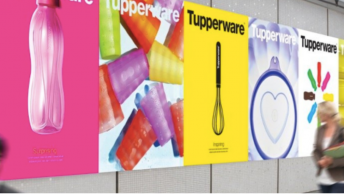Do you want to work with influencers, but aren’t sure how to comply with influencer disclosure guidelines? Here’s how to protect your brand so taking part in influencer campaigns is a breeze.
Internet marketing is a complex and constantly changing landscape. It is full of social media influencers, algorithms, and brands trying to get the word out about their products and services.
Due to it being a new world with hazy rules, it can often be confusing. Sometimes complying with influencer disclosure agreements is easy, and other times it is less clear-cut. Here are some helpful tips to keep in mind when you work with influencers to help build your digital brand.
SEE ALSO: Step Up Your eCommerce Influencer Marketing Strategy
Many Top Social Media Channels Have Built-In Disclosure Tools
The Federal Trade Commission (FTC) has made efforts in recent years to increase transparency. One result of their work is that now many of the world’s most popular social platforms provide brands and creators with built-in disclosure tools. These tools make it easier to be aware of and comply with any disclosure guidelines. They are easy to find on sites like Instagram, YouTube, Facebook.
In spring 2017, Instagram launched a “Paid Partnership with” tag. This makes it very easy for creators to highlight and announce sponsored posts in their feeds. This feature is not available for all Instagram users. However, creators and brands can find this helpful tool in the Advanced Settings section when they make Instagram posts.
SEE ALSO: How to Spot Authentic and Fake Instagram Influencers
Facebook is the world’s most popular social media platform with over 2 billion monthly users. Instagram is owned by Facebook, and both have similar branded content policies and tools. These tools make it easier for creators, marketers, influencers, and brands to understand and comply with disclosure rules. The first thing that marketers have to do is ask creator partners to request access to Facebook’s Branded Content Tool.
From that point, there are a few ways that businesses, creators, and partners can tag posts. It will really depend on the type of post, campaign specifics, and the goals of the digital brand.
YouTube
YouTube has also taken steps to improve transparency. It now allows an optional text disclosure statement to be added to any video campaign. If you are working with a YouTube influencer and want to be extra clear about complying with Influencer disclosure guidelines, you have options. You can ask the influencer to add the text disclosure statement in Creator Studio. These are the steps they will need to follow.
- Click the Edit button for the video asset that needs a sponsored content disclosure.
- On the Info and Settings click Advanced Settings below the video.
- There is a Content Declaration section at the bottom right with two boxes to choose from. Check the first box, which indicates that the video contains a paid promotion.
Making sure that these steps are taken will help ensure that you don’t face any FTC disclosure issues in the future.
SEE ALSO: How to Work With YouTube Influencers
Follow Influencer Disclosure Guidelines Best Practices Even If No Tools Are Available
It is a definite step in the right direction that many platforms offer clear-cut and simple disclosure tools and guidelines. However, not all of them do. In this case, what should digital brands do?
Fortunately, the advertising industry has some general disclosure best practices. Their rules can help inform your influencer disclosure guidelines, regardless of the platform. This informal list and FTC guidelines can help to inform the guidelines that internet marketers choose and follow.
Use These Hashtags
There are two preferred hashtags for sponsored ad campaigns according to the FTC. These are:
- #ad
- #sponsored
There are other hashtags that you might see used around social media on all different sorts of campaigns. These include hashtags like:
- #sp
- #partner
- #partnership
The FTC advises against using them to denote branded or sponsored content because they are too easy to misunderstand or ignore. Below is an example of a #sponsored post by fashion designer and influencer @ashleynelltipton.
Have The Influencer Tag You
If you are using a social channel like Instagram, it allows influencers to tag the brands they work with. In this case, make sure the creator you are working with tags your band’s Instagram page. On platforms like Instagram and Facebook, it is easy to tag sponsored content in a highly visible way. Here is an example of a sponsored post from Dubai lifestyle influencer @mrmoudz.
Almost every social platform enables influencers to link to the account of the brands sponsoring their posts in some capacity. It often involves the “@[brand name]” tag, like above.
Make Use of Umbrella Kickoff Posts
Whenever possible, marketers and influencers should plan separate posts at the beginning of sponsored campaigns. These should both explain the program and preview what type of content will be posted on social media.
Always Disclose Early On
Do not force a user to scroll down or click through a wall of text to discover that your post is sponsored. It needs to be one of the first things that followers see so they feel that they can trust your brand. In today’s market, consumers are more likely to shop with businesses they perceive as trustworthy, and people trust businesses less than ever.
According to the 2018 Edelman Trust Barometer, the overall trust of US consumers toward businesses fell from 58% in 2017 to 48% in 2018. If you can engender a sense of trust in your audience, you can really set your digital brand apart from others.
People want to support digital brands who are honest with them and respect their time, rather than ones who do not appear to. Consumers give brand loyalty in return.
Making potential customers feel tricked can alienate them. For other tips on influencer disclosure guidelines, take a look at the FTC’s blog.
Keep Up With Industry Trade Groups
The influencer marketing space is fast paced and can change in the blink of an eye. Also, the rules and best practices are constantly shifting. Due to this, many different industry professionals have come together to try and make sense of it all. A number of ad agencies, brands, talent agencies, and creators have formed and joined industry trade groups. In these groups, they share tips and create a helpful community. They also work on establishing standards for influencer disclosure guidelines and more.
There are numerous groups working in the United States and the United Kingdom to grapple with the gray areas of the online marketing sphere, find solutions, and create standards. Joining these groups to learn about how things are shifting and what up-to-date systems are being created can be very helpful. Also, when in doubt, turn to the FTC’s What People Are Asking page to find guidance on more complex influencer marketing related questions.
Influencer Disclosure Guidelines: Why They Matter
It is impossible to deny that influencer marketing campaigns are an effective marketing tool that’s here to stay. Due to this success, brands of all sizes and niches collaborate with bloggers, vloggers, and all sorts of social media personalities often. While influencer campaigns are a useful tool that internet marketers should not shy away from, they don’t come without their problems.
As this is a new marketing tactic for both brands and influencers, it is easy for both parties to step on toes or get into trouble. This can sometimes result in legal and financial penalties.
However, if you take note of and understand emerging disclosure best practices for sponsored influencer content, you don’t have to worry. This is because many of the biggest sites offer built-in branded content tools. Their tools make it easy to promote your digital brand on platforms like Instagram, YouTube, and Facebook.
SEE ALSO: Build Relationships with Industry Influencers
However, even if no formal tools exist, that does not mean your job is done. Rather, you will have to figure it out on your own. Above all, using the influencer disclosure guidelines detailed above in conjunction with emerging information can help avoid headaches.
Do you think it’s important to disclose sponsored content? Why or why not? Comment below…












